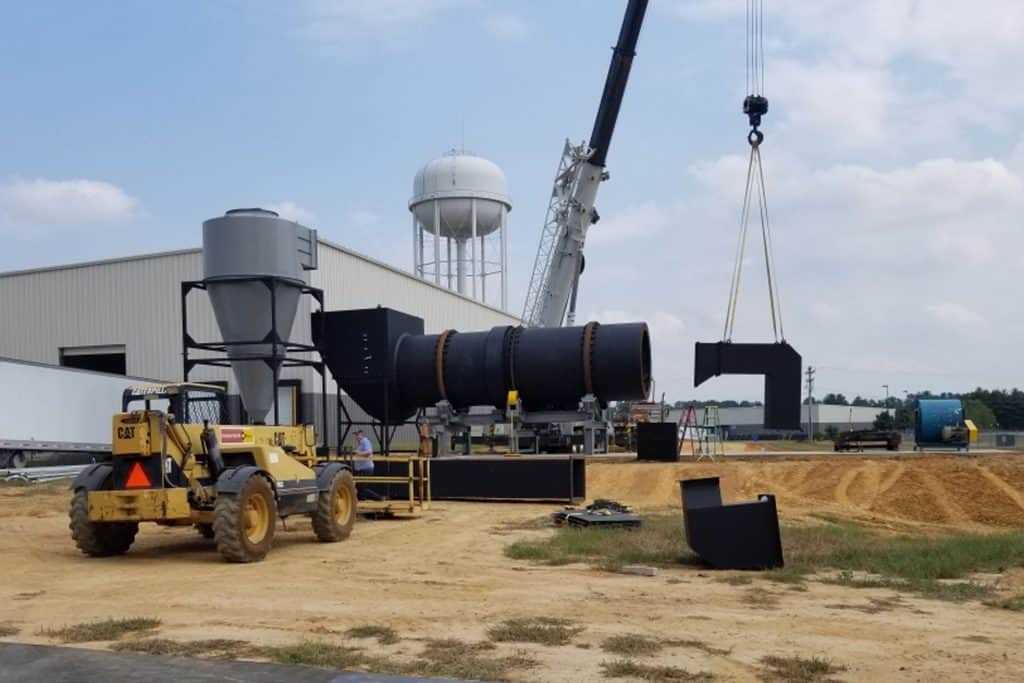Drilling muds, or drilling fluids, are an integral part of the drilling process. These specialized fluids are used to help in the process of drilling a borehole into the earth. Boreholes are created for oil and gas extraction, as well as a variety of other reasons. Drilling mud is used to lubricate the drill bet and bring the drill cuttings up to the surface. Drill cuttings are bits of solid material that are created as the drill bit breaks the rock. The drilling fluid carries the drill cuttings up to the surface, where the mud and cuttings are separated.
Drilling muds have a continuous liquid phase and are modified with various liquid and solid chemical additives to suit the performance of the fluid to the drilling conditions. These fluids are usually a mixture of water, clay, weighting material and chemicals and provide a way of keeping the underground pressures in check—the denser the fluid, the more pressure it exerts. Weighting materials, usually barite, are added to the drilling mud to help it exert as much pressure as is required to contain the pressures of the formation.
There are three types of drilling muds: water-based mud (WBM), oil-based mud (OBM) and synthetic-based mud (SBM). Water-based muds begin with water, then clays and other chemicals are added to create a homogenous blend. Clay, or shale, is generally a mixture of native clays suspended in the mud during the drilling process. The most common of these clays is bentonite, which is often called “gel.” Numerous other chemicals are added to the water-based system to achieve a variety of effects, such as viscosity control, shale stability, cooling and lubricating of equipment. WBMs consist of bentonite clay with additives such as barium sulfate, calcium carbonate (chalk) or hematite. Thickeners, such as xanthan gum, glycol and starch, are also often used to influence viscosity.
Oil-based muds consist of a base fluid made up of a petroleum product, such as diesel fuel. OBMs are often used for increased lubricity, enhanced shale inhibition and greater cleaning abilities with less viscosity than water-based muds. These fluids are composed of oil as the continuous phase and water as the dispersed phase, along with emulsifiers, wetting agents and gellants. OBMs are capable of withstanding greater heat without breaking down.
Synthetic-based muds, also known as Low Toxicity Oil Based Mud (LTOBM) have a base fluid of synthetic oil. These fluids are most often used on offshore rigs because they have the same properties as OBMs but a toxicity of fluid fumes that is much lower.
After the drilling process is finished, the drilling waste must be disposed of in some fashion. However, both drilling mud and drill cuttings contain traces of hydrocarbons, which can be hazardous to the environment. Fortunately, though, waste streams that are especially high in hydrocarbons, such as oil-based muds, are ideal candidates for thermal treatment technologies. Through processes like thermal desorption, hydrocarbons can be recovered from drilling muds, which can then be beneficially reused.
Recovering drill cuttings and drilling fluids is both practical and cost-effective, as well as an environmentally-sustainable process. Recycling drilling waste not only helps companies save money on disposal costs, but can reduce truck traffic and thus a company’s environmental footprint.
Recovered drill cuttings can be utilized to stabilize surfaces that are more vulnerable to erosion, such as roads and drilling pads. Cuttings also have a use as aggregate or filler in concrete, brick or block manufacturing. Some studies have even been done on the potential of using drill cuttings as a substrate for restoring coastal wetlands or as fuel for power plants.
Vulcan® Drying Systems, LLC in Moberly, Missouri, can supply a full range of equipment for thermal desorption processes. Our systems can be custom-designed specifically to suit your individual project needs. We have previously designed thermal desorption systems capable of processing up to 10 tons of material per hour.
The Vulcan® IDR 8440 is a new 40’ long x 7’ diameter COR-TEN indirect heated rotary thermal desorption unit. This system is designed to remediate soils and drilling muds contaminated with petroleum hydrocarbons. The Vulcan® IDR 8440 comes equipped with a vapor recovery unit (VRU) to capture vapors from the Primary Thermal Desorption Unit (PTU). The system is capable of recovering drill cuttings or up to 100 MMBtu per hour of energy for reuse as fuel, reducing the total operating cost and improving total return from projects.
In the Vulcan® IDR 8440, the material is fed to the feed hopper, which is mounted on a pugmill and equipped with a weight-controlled feed valve. From the pugmill, the material is transferred via a transfer auger to the feed auger, which conveys the material into the PTU and maintains a seal or airlock for the system.
The indirect fired rotary kiln has four heat zones, and the operating temperature of the drum can reach 1,000 degrees Fahrenheit. The kiln operates in an oxygen-deficient environment and under a slightly negative atmosphere. Vapors from the contaminated material are pulled out of the system in a countercurrent direction to the material flow. The clean, dried material is charged to a water-cooled discharge auger that rehydrates and cools the soil. The steam is extracted through a quench stack that removes any particulate from the H2O vapor stream before discharging it into the atmosphere.
Recycling drill cuttings and drilling muds can help operators meet disposal regulations, and the proper disposal of such waste prevents the contamination of water supplies and the soil. Through this process, muds and cuttings may be reused, saving money and contributing to the health of the environment.
Vulcan® Drying Systems custom-designs and manufactures drying, calcining and thermal desorption equipment. Each system is custom-built to suit the client’s specific needs. Our services include setup, commissioning, training and maintenance support services over the lifetime of your project.




